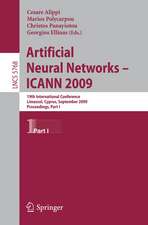VLSI and Computer Architecture
Editat de Kenzo Watanabeen Limba Engleză Hardback – 8 dec 2009
Preț: 862.13 lei
Preț vechi: 1399.28 lei
-38% Nou
Puncte Express: 1293
Preț estimativ în valută:
164.99€ • 171.62$ • 136.21£
164.99€ • 171.62$ • 136.21£
Carte disponibilă
Livrare economică 24 martie-07 aprilie
Preluare comenzi: 021 569.72.76
Specificații
ISBN-13: 9781606920756
ISBN-10: 1606920758
Pagini: 239
Ilustrații: tables, charts & illus
Dimensiuni: 186 x 266 x 20 mm
Greutate: 0.69 kg
Editura: Nova Science Publishers Inc
ISBN-10: 1606920758
Pagini: 239
Ilustrații: tables, charts & illus
Dimensiuni: 186 x 266 x 20 mm
Greutate: 0.69 kg
Editura: Nova Science Publishers Inc
Cuprins
Preface; An Ontology of Computer-Aided Design; Flexible CMOS Analog Circuits for The Next Generation of Wireless Hand Held Devices-Review & State of the Art Survey; Design Considerations & Algorithms for Broadband Fixed WiMAX Systems; VLSI Interconnections & Their Delay Performances; Development, Validation & Evaluation of a Space Qualified long Life Flight Computer Server; Reference Architecture Model & Tools for Multi-modal Perceptual Systems; MOSFET's Programmable Conductance: The Way of VLSI Implementation for Emerging Applications from Biologically Plausible Neuromorphic Devices to Mobile Communications; Vision-Based Path Planning with Onboard VLSI Array Processors; VLSI Architectures for Autonomous Robots -- A Review; Design of an Enhanced MAC Architecture for Multi-Hop Wireless Networks; Index.

























